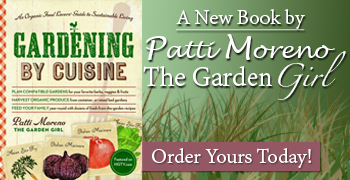How to Sow Seeds in a Raised Bed Garden with William Moss
It’s time to start getting the cold weather crops into the ground so today, I am joined by my friend, William Moss and we are talking about sowing seeds in a raised bed garden. See how simple it is to usher in a bountiful harvest.
We are planting lettuce, radishes, Asian Greens and onions. Onions do take a while so we need to get them in the ground now.
To get started the raised bed should already be prepared with good nutrient-rich soil. First, we need to create a good furrow that will run the length of the bed, just like the one that William is creating, here. We will start with the lettuce seeds. Most people wonder – how deeply do I need to plant them. I have a good tip for you. In the palm of your hand lay out three seeds next to each other. The length of those three seeds is about the depth that you want to plant your seeds. That is a very general estimation, but it works for most seeds.
William and I will create furrows that run the length of the raised bed so that we have end-to-end planting space. As you can see we simply sprinkle the seeds into the furrow. Make sure your soil is healthy, like ours. How can we tell? Because lots of worms are popping up!
Be careful when you are covering your seeds. You don’t want to bury them too deeply so that the sun can’t get to them. Seeds are fragile. Treat them with care.
The last step, as always, is to water your seeds thoroughly. The moistness will assist in the germination process. Within a week you will see the lettuce starting to show. Really!
But that’s not all you have to do. Because lettuce particularly is so prolific, you must go back and thin out your germinated seeds so that each plant gets the chance to grow to its full potential. When you thin out the seedlings, don’t worry, they won’t go to waste. I use them to feed my chickens or you can put it in your compost bin. William uses the sprouts to throw into salads or to put on sandwiches. They are delicious and have a subtle fresh flavor.
Now that that’s done, we have about 6-8 weeks and then it will be time for the hot weather crops like eggplant, pepper and of course my favorites, tomatoes.
See you next time.












